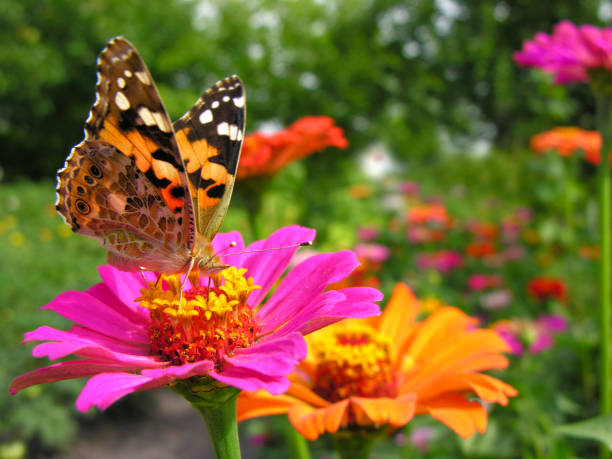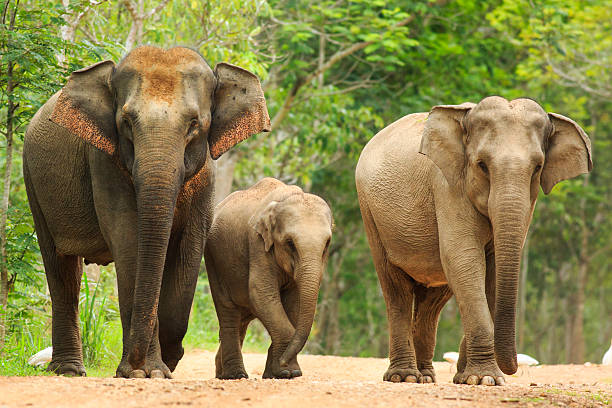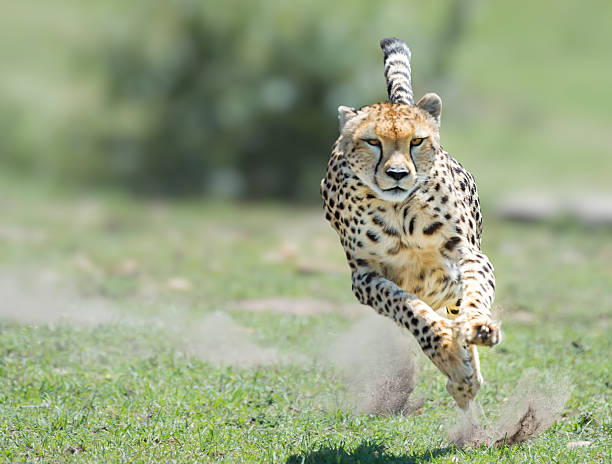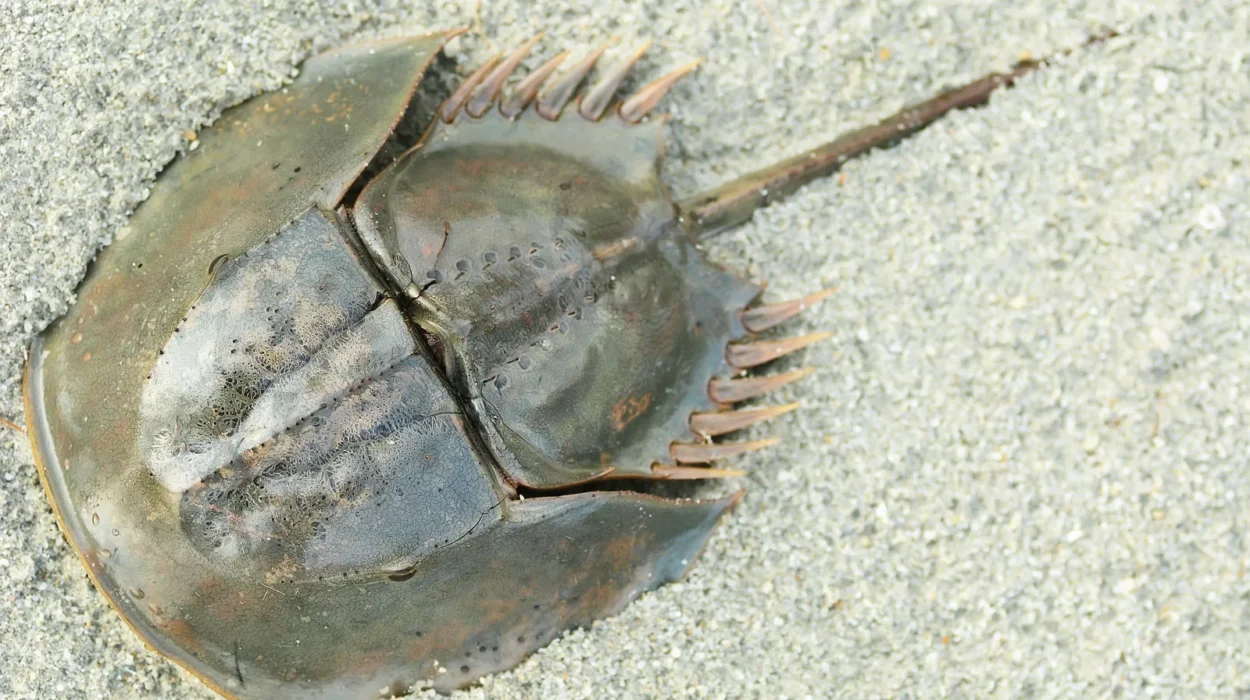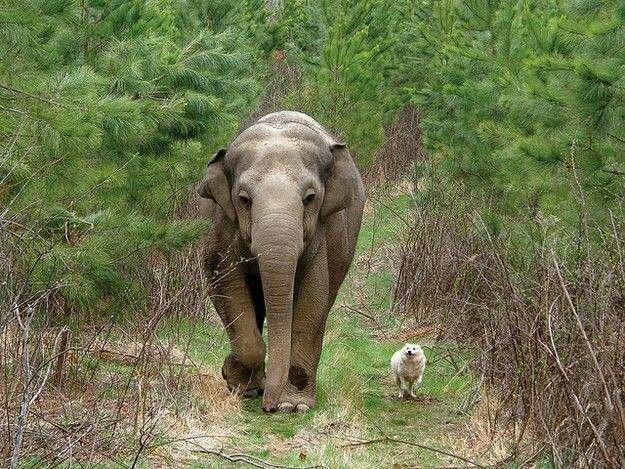When most people think of pollination, the first image that flutters to mind is that of a bee — small, fuzzy, and industrious, moving gracefully from flower to flower. Bees are indeed nature’s most iconic pollinators, responsible for a vast share of global food production. Yet beyond these golden-winged heroes exists an entire world of creatures just as vital, just as miraculous, and just as breathtaking in their service to life.
Pollination is more than a biological process; it’s a delicate symphony of movement, color, and timing. Every day, countless animals — some elegant, some unexpected — take part in this silent ballet, ensuring the continuation of ecosystems across the globe. Butterflies, bats, beetles, birds, and even tiny nocturnal moths all play their part. Their contribution shapes landscapes, supports food webs, and breathes color into our world.
So let’s step beyond the hive and into the wild expanse of the natural orchestra. These ten extraordinary pollinators prove that bees may be the headline act, but they’re certainly not the whole show.
1. Butterflies – The Artists of the Air
Graceful, vibrant, and ephemeral, butterflies are perhaps the most enchanting pollinators after bees. With wings painted in colors that seem borrowed from dreams, they flutter delicately across meadows and gardens, sipping nectar while unwittingly carrying pollen from flower to flower.
Unlike bees, which prefer clusters of short, tubular blooms, butterflies are drawn to broad, flat flowers where they can easily rest while feeding. Their long, straw-like tongues — proboscises — allow them to reach deep into blossoms that other pollinators can’t access. In this way, they become crucial partners for plants that rely on deep nectar reserves, such as milkweeds, coneflowers, and asters.
Butterflies are daytime pollinators, guided by vision more than scent. They favor bright colors — red, orange, pink, and purple — hues that speak to their remarkable ability to see ultraviolet light. In the process of seeking nectar, they collect fine dustings of pollen on their legs and bodies, carrying it across fields in a trail of invisible life.
Perhaps no story of butterfly pollination is more famous than that of the monarch. As they migrate thousands of miles across North America, monarchs help fertilize countless plants, proving that beauty, fragility, and power can coexist within a single pair of wings.
2. Moths – The Nocturnal Gardeners
While butterflies rule the daylight, moths take the night shift. Cloaked in subtle tones and equipped with extraordinary sensitivity to scent, moths are among the most important — and overlooked — pollinators in nature.
At dusk, as human eyes close, moths awaken to a world of pale, fragrant flowers that bloom only under the moon. These “night-blooming” plants — such as jasmine, yucca, and evening primrose — have evolved specifically for moth pollination. Their white or silver petals reflect moonlight, guiding the moths like celestial runways.
Hawk moths, with their sleek bodies and powerful wings, are the night’s equivalent of hummingbirds. Some species can hover mid-air while unfurling their long proboscises to sip nectar, transferring pollen from one bloom to another with precision.
The yucca plant and the yucca moth share one of the most astonishing examples of coevolution. The moth not only pollinates the flower but also lays its eggs within it; the larvae feed on a portion of the developing seeds while leaving enough for the plant to reproduce. It’s a perfect partnership — a dance of trust between species evolved over millions of years.
Without moths, entire ecosystems would falter in silence, and countless nocturnal flowers would never bear fruit. They are the unseen gardeners of the night, working under the silver glow of the moon.
3. Bats – The Midnight Pollinators of the Tropics
In tropical forests and deserts, a different kind of night worker takes flight — the bat. Often misunderstood and unfairly feared, bats are in fact some of the planet’s most effective pollinators.
Known as chiropterophilous pollinators (from the Greek for “hand-winged lovers”), nectar-feeding bats sustain ecosystems across Central and South America, Africa, and Asia. Species such as the lesser long-nosed bat and the Mexican long-tongued bat specialize in feeding from night-blooming cacti, agaves, and fruit trees.
Bats possess keen senses of smell and echolocation that help them locate blossoms in the dark. Their long tongues and brush-like hairs are perfectly adapted for gathering nectar and pollen. As they feed, their furry faces and bodies become coated in pollen, which they carry to other flowers, ensuring cross-pollination.
These nocturnal mammals are essential for the pollination of economically vital plants like bananas, mangoes, and guavas. Even tequila owes its existence to the agave plant — and therefore to bats. Without them, this iconic spirit of celebration would disappear from our tables.
Bats are the unsung heroes of the night sky, weaving life into the darkness with every silent beat of their wings.
4. Hummingbirds – The Jewel-Winged Pollinators
Few creatures embody the poetry of motion like the hummingbird. With iridescent feathers that flash like liquid gems, these tiny dynamos hover in mid-air, wings beating up to 80 times per second. But their beauty is matched only by their importance as pollinators.
Found exclusively in the Americas, hummingbirds are nature’s aerial acrobats. They feed on nectar from long, tubular flowers, often red or orange — colors that bees can’t easily see but that hummingbirds are drawn to with laser precision. As they sip, their foreheads and throats brush against stamens and pistils, transferring pollen as they move rapidly between blooms.
Unlike most pollinators, hummingbirds have a high metabolic rate that demands constant feeding. They visit hundreds of flowers daily, making them incredibly efficient at spreading pollen. Their role in tropical ecosystems is particularly vital, where they help pollinate orchids, heliconias, and bromeliads.
The relationship between hummingbirds and flowers is a marvel of coevolution. Plants have evolved to suit the bird’s hovering flight and narrow beak, while the birds depend on nectar as their primary energy source. Together, they form one of the most elegant partnerships in the natural world.
To watch a hummingbird in motion is to witness the heartbeat of life itself — fast, fiery, and fleeting, yet endlessly sustaining.
5. Beetles – The Ancient Pollinators
Long before bees or butterflies ever buzzed through prehistoric skies, beetles were already at work as the planet’s first pollinators. These ancient insects — sometimes called “mess and soil pollinators” — have been fertilizing flowers for over 200 million years.
Beetles are drawn to large, bowl-shaped blossoms that emit strong, often spicy or fruity scents. Magnolias, water lilies, and lotuses are classic beetle-pollinated plants. Because beetles aren’t as delicate as other pollinators, they often clamber over flowers, chewing petals and wallowing in pollen — hence their messy reputation.
Despite their rough approach, beetles play an indispensable role in maintaining plant diversity. They are especially important in tropical and desert ecosystems, where they pollinate a vast range of flowers that bloom near the ground or at night.
There’s a certain rugged poetry in beetle pollination. It’s less a dance and more a determined march through petals and dust — yet it’s no less vital. These unsung pioneers remind us that pollination, at its core, is about persistence and diversity, not just elegance.
6. Flies – The Unexpected Pollinators
If the mention of flies conjures annoyance rather than admiration, it’s time for a change in perspective. Many fly species are remarkable pollinators, particularly in environments where bees are scarce or absent.
Hoverflies, or flower flies, are among the most important. With their bright yellow and black stripes, they often resemble bees, though they lack stingers. Hoverflies feed on nectar and pollen, visiting countless flowers daily and ensuring widespread pollination.
In cold regions like the Arctic or high mountains, where bees cannot survive, flies take over entirely. They pollinate plants such as buttercups and alpine saxifrages, proving their adaptability and importance in extreme conditions.
Carrion flies, though less glamorous, pollinate plants that mimic the scent of decaying flesh, like the infamous corpse flower. These unusual relationships demonstrate nature’s boundless creativity — even decay becomes a tool for life.
Flies may not have the charm of butterflies or the charisma of hummingbirds, but their quiet diligence sustains ecosystems from tundra to tropics. They are proof that beauty in nature often hides in plain sight.
7. Wasps – The Reluctant Pollinators Turned Essential Allies
Wasps often get a bad reputation for their stings and aggression, but they are also significant — and often overlooked — pollinators. Unlike bees, most wasps don’t have hairy bodies for collecting pollen, but their frequent visits to flowers for nectar make them accidental couriers of life.
One of the most fascinating examples of wasp pollination is the fig-wasp relationship. Each species of fig tree is pollinated by its own unique species of tiny wasp in a partnership so intricate it borders on poetry. The female wasp enters the fig through a tiny opening, lays her eggs, and in the process pollinates the internal flowers. Her offspring then carry pollen to other figs, continuing the cycle.
This relationship has existed for over 60 million years, shaping not only ecosystems but also human diets — figs are among the earliest cultivated fruits.
Beyond figs, wasps also pollinate orchids, umbellifers, and a variety of wildflowers. Their lean bodies, though less fluffy than bees, still brush against pollen, and their mobility ensures widespread fertilization.
They may sting, but they also sustain. The wasp, in its fierce grace, teaches us that nature’s balance often hides behind misunderstood forms.
8. Ants – The Ground Workers of Pollination
Ants, the tireless laborers of the natural world, might seem unlikely pollinators — after all, they rarely fly and spend most of their lives underground. Yet these industrious insects play a quiet but crucial role in pollination, particularly for small, ground-level plants.
Certain plants have evolved specifically to accommodate ants. Their flowers produce abundant nectar close to the ground, and the ants, attracted by this sweet reward, inadvertently transfer pollen on their bodies.
However, ant pollination (known as myrmecophily) is a complex affair. Because ants produce antimicrobial secretions that can damage pollen, only certain plants have adapted to their methods. Alpine and desert species often rely on them, taking advantage of their abundance and persistence in harsh climates.
While ants may not rival bees or butterflies in efficiency, their sheer numbers make up for it. In ecosystems where other pollinators are scarce, they become vital caretakers of reproduction and renewal.
Their work may be unseen, but it hums beneath every step we take — a quiet reminder that the smallest creatures can have the largest influence.
9. Birds Beyond Hummingbirds – The Global Avian Pollinators
Hummingbirds may be North America’s feathered pollination champions, but across the world, many other birds carry the torch. In Africa, sunbirds with their iridescent plumage hover among acacias and aloes. In Australia, honeyeaters flit between eucalyptus blossoms, their long tongues probing for nectar. And in Asia and the Pacific, the brilliant lorikeets spread pollen among rainforest blooms.
These birds share a common feature: a love for nectar-rich flowers and adaptations that make them perfect pollinators. Long beaks, specialized tongues, and keen color vision help them target blooms most insects can’t reach.
Some flowers have evolved explicitly to attract birds — they tend to be brightly colored (especially red or orange), tubular, and produce copious nectar but little scent. In exchange for the energy-rich drink, birds unknowingly collect and transport pollen on their heads and beaks.
The ecological impact of bird pollination is profound. In tropical and island ecosystems, where bees may be rare, birds often serve as the primary pollinators for entire plant communities. Without them, forests would lose their vibrancy, and the web of life would unravel strand by strand.
Their songs may delight our ears, but their work sustains our world.
10. Lemurs – The Mammalian Pollinators of Madagascar
Deep in the forests of Madagascar, a furry pollinator moves among the branches — not a bat, but a lemur. These primates are among the very few non-flying mammals known to regularly pollinate flowers.
Species like the black-and-white ruffed lemur have long snouts and tongues adapted to feeding on nectar from large, sturdy flowers such as those of the traveler’s palm. As they feed, their faces and fur become dusted with golden pollen, which they then transfer to other blossoms as they move through the forest.
This unique behavior highlights the adaptability of pollination as a strategy — even mammals, guided by sweet rewards, can become agents of reproduction.
Unfortunately, many of Madagascar’s lemur species are endangered due to deforestation and hunting. Their loss would not only be a tragedy for biodiversity but also for the plants that depend on them. Protecting lemurs means protecting the intricate dance of life that has unfolded on this island for millions of years.
The Great Web of Pollination
Pollination is not a single story — it’s a vast, interconnected epic. From the shimmer of a butterfly’s wing to the silent glide of a bat, from the hum of a hoverfly to the stealthy crawl of an ant, every pollinator plays a role in maintaining the rhythm of life on Earth.
Without pollinators, our world would lose far more than fruit and flowers. It would lose its pulse — the invisible thread that ties ecosystems together, that keeps forests blooming and crops thriving. Every bite of food, every fragrance of a flower, every burst of spring color is a gift passed hand to hand, wing to wing, across species and time.
The next time you see a moth in the lamplight, a beetle on a petal, or a hummingbird hovering in the sun, remember: the story of life is written in pollen. And the heroes who carry it come in many shapes — some winged, some furred, all extraordinary.
The Legacy of the Pollinators
As climate change, habitat loss, and pesticides threaten pollinator populations worldwide, their song grows fainter each year. But awareness brings hope. By planting diverse flowers, protecting wild habitats, and valuing the unseen labor of these creatures, we can help sustain the balance they maintain.
Bees may be the most celebrated, but beyond them lies a dazzling network of life — butterflies, bats, beetles, flies, birds, and even lemurs — all working in harmony to keep the world alive.
Pollination is the poetry of survival, and every petal and wingbeat tells a verse. To cherish these pollinators is to cherish life itself — the soft hum, the flutter, the fragrance that remind us that even the smallest creatures hold the power to sustain the Earth.
